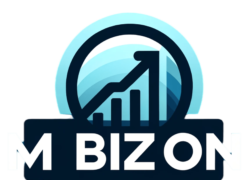AI trading involves using sophisticated computer programs and algorithms to analyze vast amounts of market data, identify patterns, and execute trades automatically. These AI systems process and interpret data much faster and more efficiently than human traders, enabling them to make split-second decisions and adapt to changing market conditions in real-time.
Types of AI trading strategies
Quantum AI trading regulations in Australia encompass various strategies and approaches with unique characteristics and objectives.
- Algorithmic trading – Using pre-programmed rules and algorithms to execute trades automatically based on specific market conditions or indicators. Algorithmic trading can be used for various purposes, such as market making, trend following, and arbitrage.
- High-frequency trading (HFT) – HFT is a type of algorithmic trading that focuses on executing many trades in a very short period, often in milliseconds. HFT systems aim to capitalize on minor price discrepancies and market inefficiencies, generating profits through high-volume trading.
- Machine learning-based trading – This approach involves training machine learning models on historical market data to identify patterns and predict future price movements. Machine learning-based trading can incorporate techniques such as supervised, unsupervised, and reinforcement learning.
- Sentiment analysis – AI trading systems can analyze news articles, social media posts, and other unstructured data sources to gauge market sentiment and investor opinions. By incorporating sentiment analysis into trading strategies, AI systems can identify market trends and make more informed investment decisions.
AI trading process
- Data collection and preparation – AI trading systems require vast historical and real-time market data to train and operate effectively. This data includes price information, trading volumes, news events, and other relevant indicators. The data is often collected from various sources, such as financial exchanges, news feeds, and social media platforms. Before being fed into AI models, the data undergoes preprocessing and cleaning to ensure quality and consistency.
- Feature engineering and selection – Feature engineering involves transforming raw market data into meaningful features or variables used as inputs for AI models. This process may include creating new features based on mathematical or statistical transformations, such as moving averages or technical indicators. Feature selection techniques are then applied to identify the trading strategy’s most relevant and informative features.
- Model training and validation – Once the data is prepared and features are selected, machine learning models are trained using historical market data. The models learn to identify patterns and relationships between the input features and the target variable, such as future price movements. The training process often involves splitting the data into training and validation sets to assess the model’s performance and prevent overfitting.
- Strategy development and backtesting – Based on the trained AI models, trading strategies are developed to generate buy and sell signals. These strategies may incorporate rules, risk management techniques, and position-sizing methods. Backtesting is performed by simulating the trading strategy on historical data to evaluate its performance and potential profitability. This helps identify any weaknesses or limitations in the plan before deploying it in live trading.
- Live trading and monitoring – Once the AI trading strategy has been thoroughly tested and validated, it is deployed in live trading environments. The AI system continuously monitors market data, executes trades based on the generated signals, and adapts to changing market conditions. Real-time performance monitoring and risk management are critical to ensure the strategy operates within predefined parameters and limits.













Comments